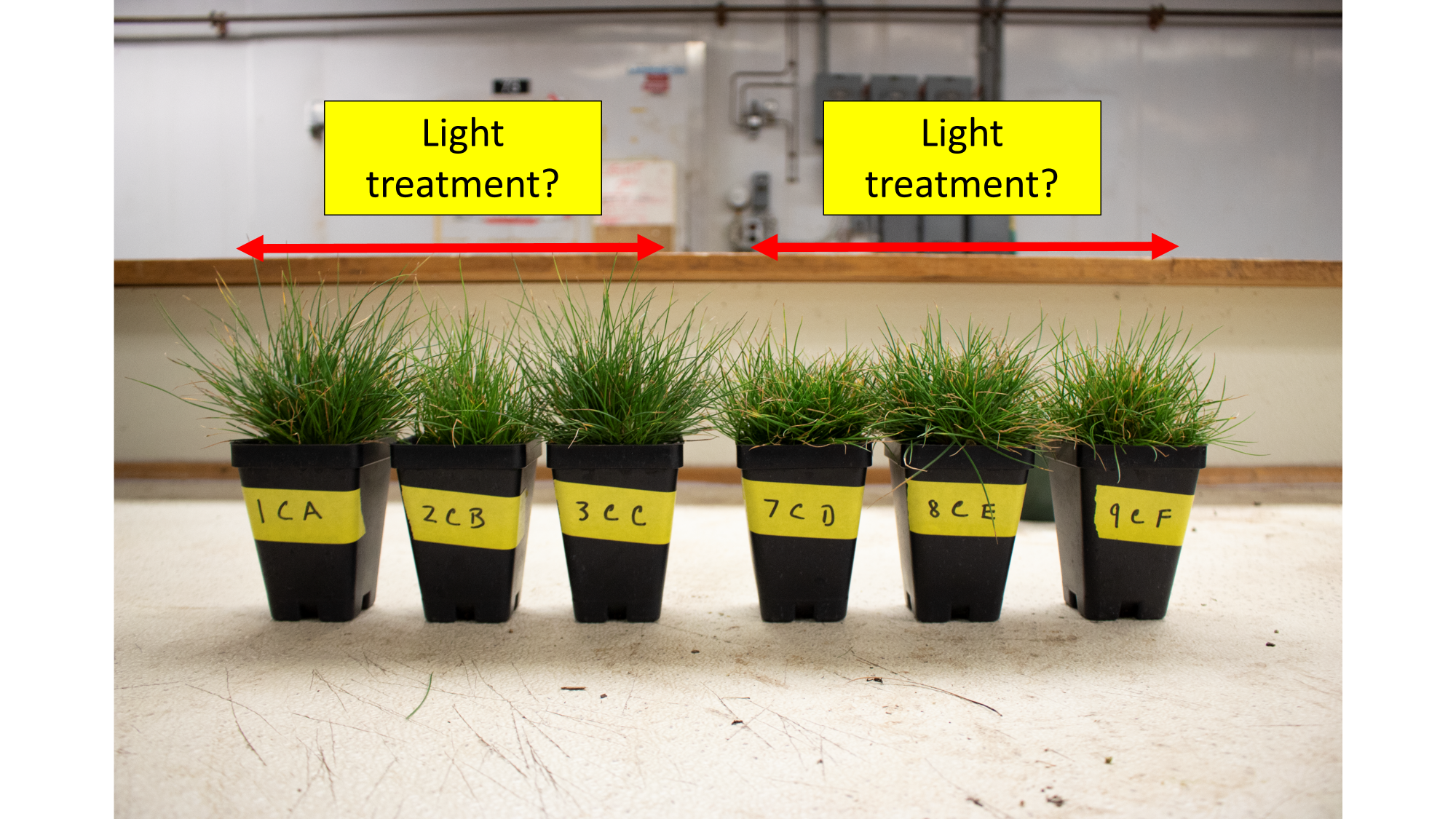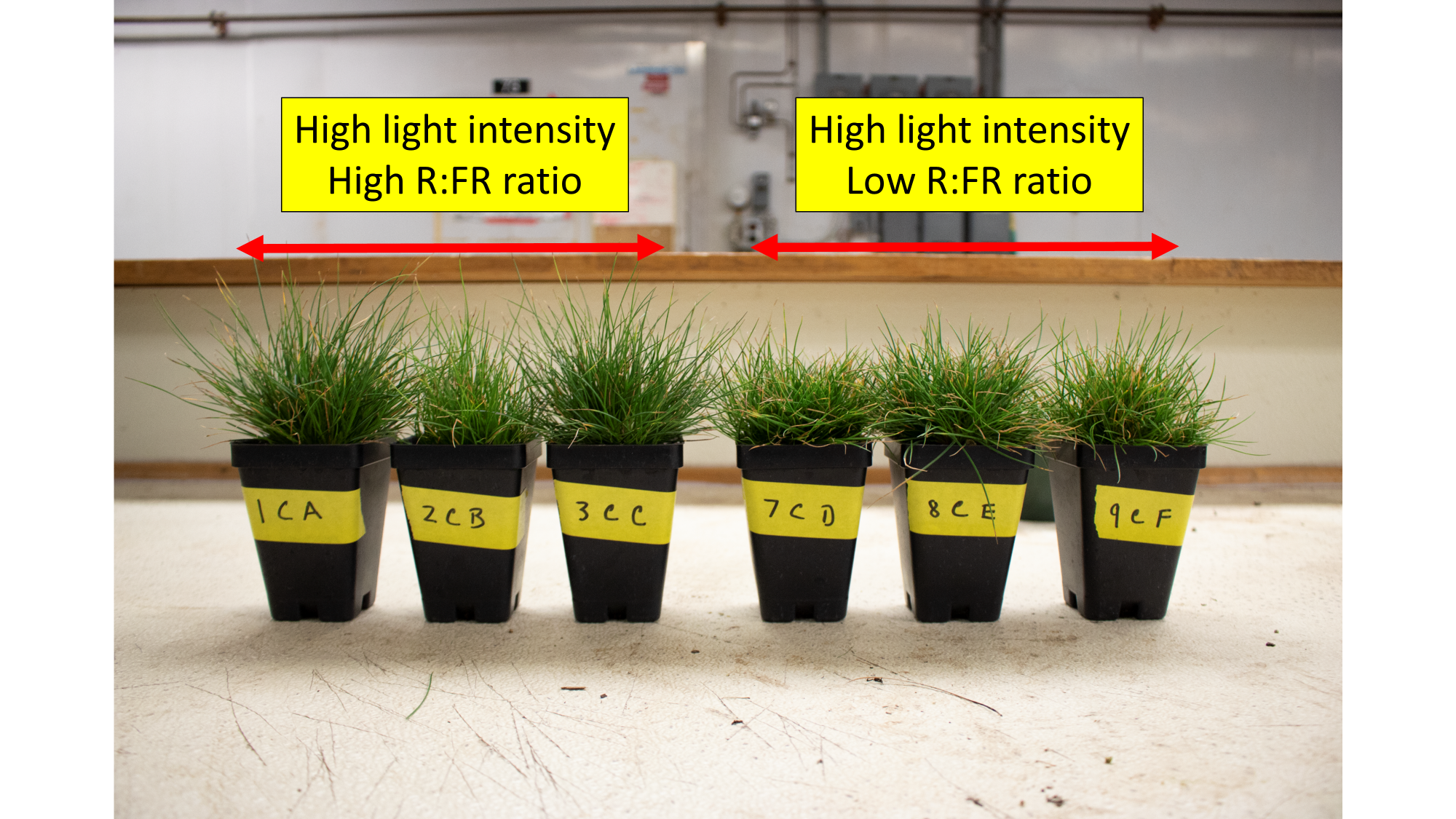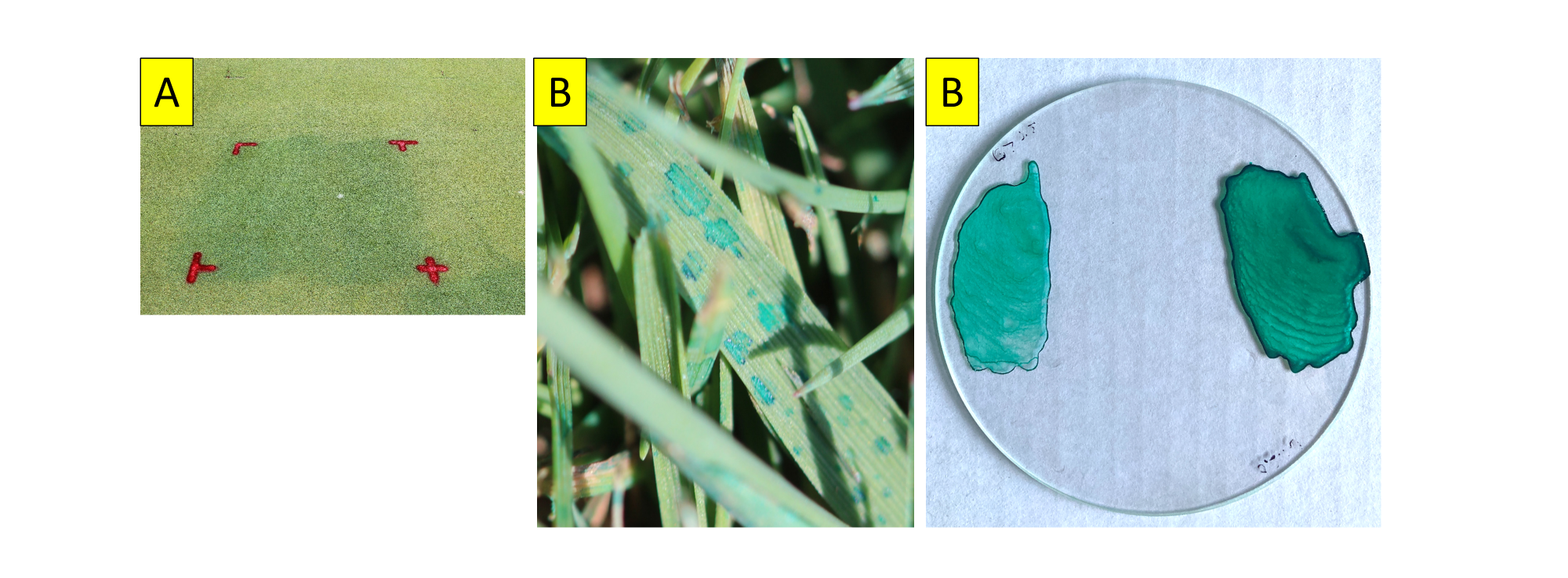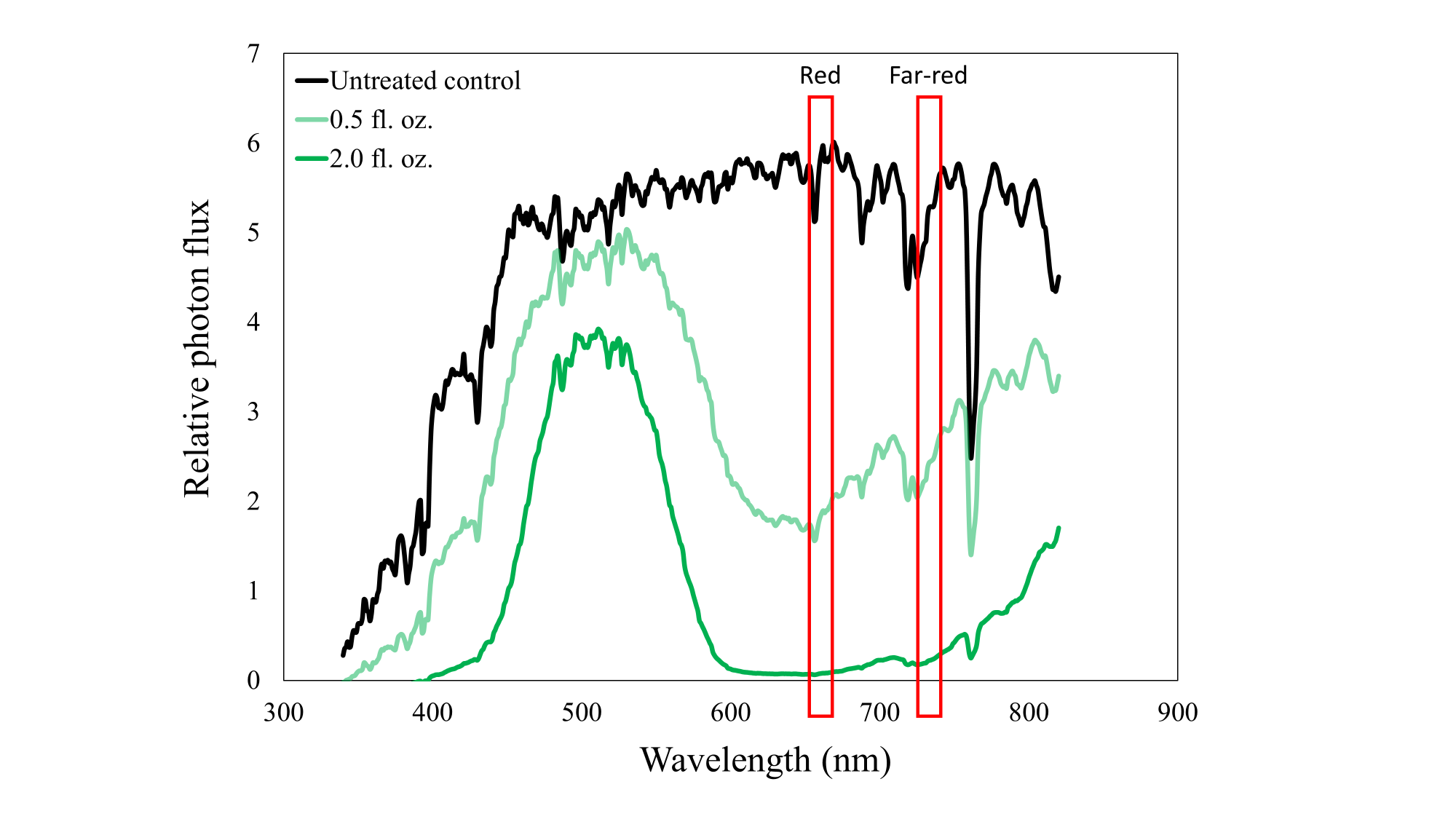By Dominic Petrella
I am continually amazed by the impact that light has on turfgrass growth and development. We know that the quantity (intensity) of light impacts photosynthesis as well as alters overall growth and development, and we know that the quality or composition of light also alters gene expression, growth, and developmental responses in all plants.
One alteration in light quality that is well known to alter turfgrass growth is the ratio of red light to far-red light (R:FR ratio). However, most of this research is focused on the impact of the R:FR ratio when light intensity is low, this is what occurs under shade from trees/shrubs. To try and better understand the impact of far-red light and the R:FR on turfgrasses, we decided to treat turfgrass plants growing under relatively high-intensity light with a low R:FR ratio (Figure 1).
Based on how we understand the impact of a low R:FR ratio under low-intensity light, we would assume that under high-intensity light, a low R:FR ratio would result in the production of longer leaves and plants with less tillers. However, for these experiments, the opposite occurred.
After multiple weeks of treatment and running multiple experiments, hard fescues treated with a combination of high-intensity light and a low R:FR ratio were shorter and had many more tillers (sometimes double) compared to plants treated with a combination of high-intensity light and high R:FR ratio (Figure 2). These results may be due to a combination of photosynthetic effects as well as photomorphogenic effects independent of photosynthesis.
More recently, results from researchers at Utah State University and the University of Georgia (Zhen et al., 2018; Zhen and Bugbee, 2020) have shown, working on a range of different plants (lettuce, basil, spinach, kale, soybean, potato, cucumber, sunflower, common bean, wheat, rice, corn, and sorghum), that far-red light can act similarly to light between 400-700 nm of photosynthetically active radiation (PAR light), and can increase photosynthesis when the far-red light is given with adequate light intensity. However, far-red light on its own does not increase photosynthesis much. This isn’t something brand new, and was previously described by Emerson et al., in 1957, but advances in LED technology have allowed us to further explore these topics more in greater depth.
The results that we have been getting with this project have been very interesting and we are currently in the final stages of finishing this for publication as well as planning follow up experiments to better understand why these differences are occurring. Still, you may be thinking why does this matter for turf? I thought the same thing for a while…high-intensity light and a low R:FR ratio does not occur in the real world. Well, for turfgrass managers that apply pigment products, this isn’t true.
Pigments sprayed on turf to increase greenness, decrease stress, or potentially decrease water consumption can alter the light quality the leaves are exposed to, just like how trees alter the light the turfgrass below is exposed to (Figure 3). A lot of focus has been paid to how the pigment reflects damaging light like ultraviolet light or how much the pigment reduces light intensity, but little to no attention has been given to how the pigment alters the quality of light the leaves are exposed to once light passes through the pigment layer.
We examined light passed through a dried solution of pigment green 7 (from Sensient® Industrial Colors, SensiPro™ Green Links™ Premier™) sprayed at 0.5 or 2.0 fl. oz. / 1,000 ft2 (Figure 3B and Figure 4). The pigment reduced light intensity by 40-75% compared to full sun passed through quartz glass only, leading to light intensities that were 930 or 400 µmol m-2 s-1, on average, for the 0.5 or 2.0 treatments (full sun was approximately 1,550 µmol m-2 s-1 on average). The pigments also reduced the R:FR ratio to 0.79 or 0.35 on average for the 0.5 or 2.0 treatments respectively (full sun was approximately 1.14 on average).
The intensity and the R:FR ratio of the light that had been passed through the higher rate of pigment was quite similar to the light used to treat ‘Gladiator’ hard fescues described above. This combination of a low R:FR ratio and still relatively high-intensity light could be part of the reason why pigments always seem to improve turfgrass growth and development. While there’s been conjecture as to whether or not pigments reduce stress, these results help further point to a possible reason for this reduction. Zhen et al., (2018) showed that far-red light increases photochemical efficiency (a way to measure plant stress) when added to a blue/red LED light background, and we have also observed that pigment green 7 can also increase photochemical efficiency (Petrella et al., 2014). Taken together, the results of our experiments with ‘Gladiator’ hard fescue alongside data from these pigments show how little we know about turfgrass response to light. More importantly, these ideas are helping inform us on how we can use light to decrease turfgrass stress in the field. Sometimes when we do research that doesn’t make much sense we learn more than we ever set out to.
References
Emerson, R., R. Chalmers, and C. Cederstrand. 1957. Some factors influencing the long-wave limit of photosynthesis. Proc. Natl. Acad. Sci. U.S.A. 43:133. https://doi.org/10.1073%2Fpnas.43.1.133
Petrella, D.P., D.S. Gardner, T.K. Danneberger, and J.D. Metzger. 2014. The potential photoprotective ability of copper phthalocyanine. Proc. of the ASA, CSSA and SSSA Intl. Meetings. Long Beach, Ca. Nov. 2014.
Zhen, S., B. Bugebee. 2020. Far-red photons have equivalent efficiency to traditional photosynthetic photons: Implications for redefining photosynthetically active radiation. Plant Cell Environ. 43: 1259– 1272. https://doi.org/10.1111/pce.13730
Zhen, S., M. Haidekker, and M.W. van Iersel. 2019. Far-red light enhances photochemical efficiency in a wavelength-dependent manner. Physiol Plantarum, 167: 21-33. https://doi.org/10.1111/ppl.12834



